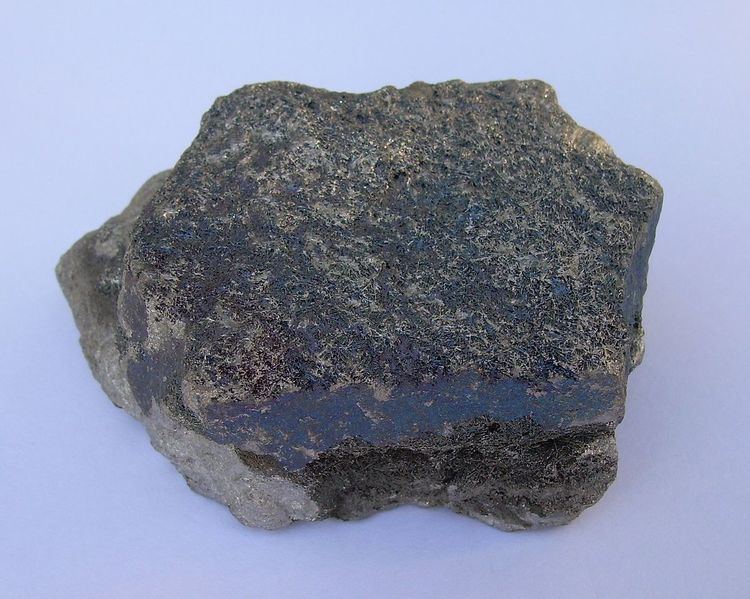 | ||
Ferrochrome (FeCr) is an alloy of chromium and iron containing 50% to 70% chromium by weight.
Contents
Ferrochrome is produced by electric arc carbothermic reduction of chromite. Most of the world's ferrochrome is produced in South Africa, Kazakhstan and India, which have large domestic chromite resources. Increasing amounts are coming from Russia and China. The production of steel is the largest consumer of ferrochrome, especially the production of stainless steel with chromium content of 10 to 20% is the main application of ferrochrome. Chromium (Cr) is an element of the Periodic Table.
Usage
Over 80% of the world's ferrochrome is utilised in the production of stainless steel. In 2006 28 Mt of stainless steel were produced. Stainless steel depends on chromium for its appearance and its resistance to corrosion. The average chrome content in stainless steel is approximately 18%. It is also used when it is desired to add chromium to carbon steel. FeCr from Southern Africa, known as "charge chrome" and produced from a Cr containing ore with a low carbon content, is most commonly used in stainless steel production. Alternatively, high carbon FeCr produced from high grade ore found in Kazakhstan (among other places) is more commonly used in specialist applications such as engineering steels where a high Cr to Fe ratio and minimum levels of other elements such as sulfur, phosphorus and titanium are important and production of finished metals takes place in small electric arc furnaces compared to large scale blast furnaces.
Production
Ferrochrome production is essentially a carbothermic reduction operation taking place at high temperatures. Cr Ore (an oxide of chromium and iron) is reduced by coal and coke to form the iron-chromium alloy. The heat for this reaction can come from several forms, but typically from the electric arc formed between the tips of the electrodes in the bottom of the furnace and the furnace hearth. This arc creates temperatures of about 2,800 °C (5,070 °F). In the process of smelting, huge amounts of electricity are consumed, making production in countries with high power cost very expensive.
Tapping of the material from the furnace takes place intermittently. When enough smelted ferrochrome has accumulated in the hearth of the furnace, the tap hole is drilled open and a stream of molten metal and slag rushes down a trough into a chill or ladle. The ferrochrome solidifies in large castings, which are crushed for sale or further processed.
Ferrochrome is often classified by the amount of carbon and chrome it contains. The vast majority of FeCr produced is charge chrome from Southern Africa. With high carbon being the second largest segment followed by the smaller sectors of low carbon and intermediate carbon material.
